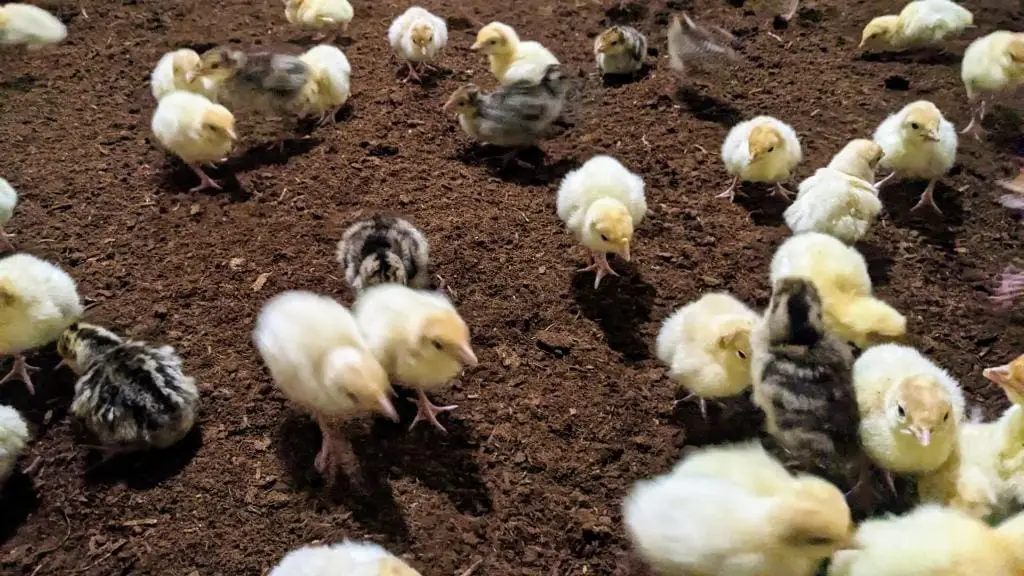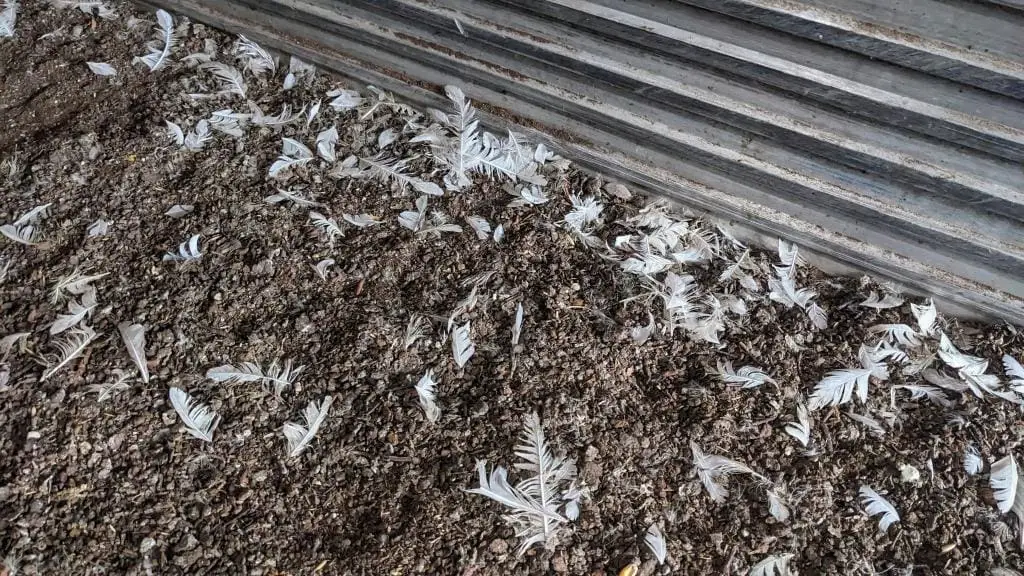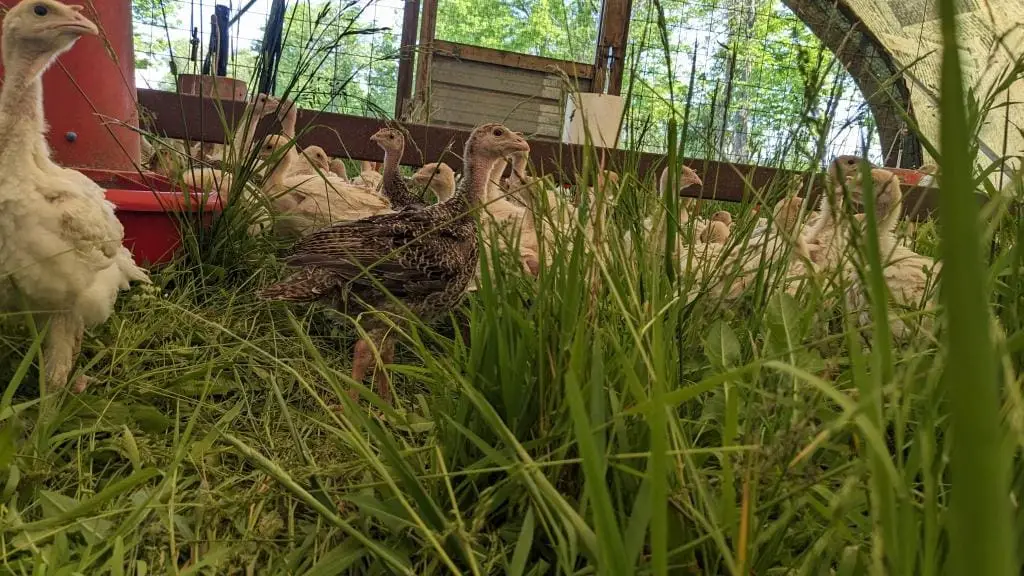Here we are in early June, and much of the daily work on the farm involves turkeys. I realize that many of my readers don’t think about turkeys until November, but for our farm the turkey season starts in May and stretches all the way into the fall.

We receive our turkeys from a hatchery, typically one day after they’ve cracked and wriggled their way out of the eggs. Carrying them home in the minivan, it is shocking just how much volume their peeps can produce. I always make sure to bring earbuds for the drive; even if I’m not listening to anything the earbuds help to attenuate the sharpness of their calls.
Once home, we move the little guys into a brooder. We use the same setup for turkeys and chickens, but turkeys need a few special accommodations and an extra measure of attention. Chickens are best suited to a 90 degree brooder, but turkeys prefer a little extra heat, so we set the thermostat for 95 degrees. It feels sweltering to us, but they just zip all over the place exuberantly. If you didn’t see it, I shot this video last year showing the turkeys as I introduced them to the brooder.
We also do a lot of extra “child-proofing” when the turkeys are getting started. I’m not sure why they are so different from chickens, but turkeys just seem to find trouble, so we have to make sure there’s nothing for them to get stuck in or on. I don’t agree with the popular opinion that turkeys are especially dumb, but they do have a “turkey way” of doing things, and the turkey way just doesn’t always align well with the way humans design the world. They manage to crawl into tight places and then can’t figure out how to back out. Like pigs, they much prefer to go through an obstacle than to back out of it, so they’ll keep pushing further forward into a problem rather than realizing they can easily escape by reversing. And it seems inevitable that if we leave a five gallon bucket standing in the corner, we’ll find turkeys in it the next day, staring up at us in confusion. They can fly well enough to get themselves into trouble, but once in a confined space, they can’t stretch their wings wide enough to fly back out.

We usually know the day when the turkeys are ready to go out on pasture when we find the brooder filled with feathers. Once they’ve grown enough feathers to begin cycling to newer ones, they can handle outdoor temperatures. Although we started them in the brooder at 95 degrees, along the way we drop the thermostat by about one or two degrees per day, with the goal of getting them ready to encounter cooler weather without being disturbed by the change. So if we’ve done our jobs right, at about the same time as the feathers are carpeting the floor, the turkeys are ready to move on to the pasture.
One thing we love about turkeys is that they travel together as a flock much more consistently than chickens do. Chickens certainly are social birds, but they don’t have the same instinctual desire to move in a group. Half the chickens bunch up and get confused in a scrum, while the other half break and scatter in all directions. When we need to move chickens out to pasture, it becomes a whole-family project to shoo them out. But the turkeys just move on their own, only requiring us to follow behind with some pieces of plywood to show them that we’ve blocked off the path behind them.

Instead of plopping the turkeys directly into an open field, we give them two more weeks in a training situation. We’ve reassigned our oldest chicken shelter to new duties as a pasture halfway house. This protects them from sun, rain, and predators, while still giving them a place to learn about the different types of plants in the pasture. It is fascinating to watch the little guys exploring on their first day, as they nibble here and there, discovering the grasses, clovers, and dandelions, and scooping up small pebbles to fill their gizzards.
That catches us up on where the turkeys are now. By mid-June we’ll bring them to the open pasture where they’ll graze through the fall, but I’ll save that story for a couple of weeks and perhaps to use that opportunity to show off the new turkey roosting trailer we’ve been building for them. The trailer is nearing completion but we’ve still got a few hours of work to install the shade canopy and to finish welding up a new hitch and stabilizers, so it probably makes sense to wait until we have the whole thing ready before we unveil it.


4 thoughts on “Moving Turkeys to their Training Pasture”
You continue to inspire and amaze. Thanks.
Thank you Phil!
Good description of the careful and caring way you tend to your flock. I’m proud that we here at Cairncrest Farm get to sell your poultry. The best.
Thanks Alanna. We’re always grateful for the two-way partnership with you guys. – Dave